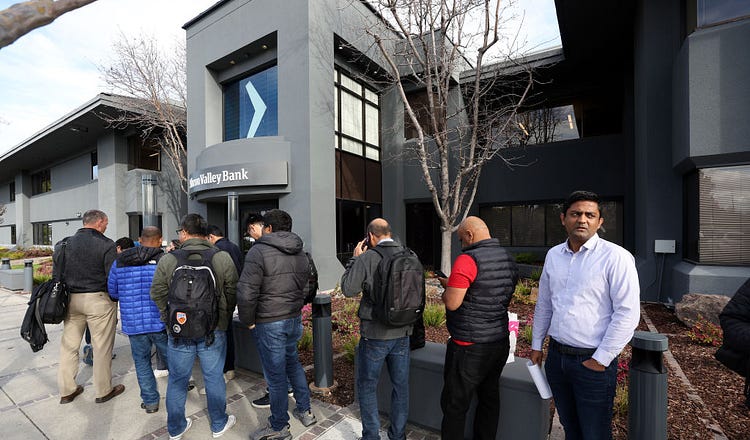Why Bank Runs Happen—and What We Can Do to Stop the Panic

Customers line up to retrieve their funds from Silicon Valley Bank on March 13 after its sudden and epic collapse. (Justin Sullivan via Getty Images)
Human beings stampede. We always have. But technology has taken our ancient impulses and put them on warp speed.
438
“It turned out that one of the biggest risks to our business model was catering to a very tightly knit group of investors who exhibit herd-like mentalities.” — Silicon Valley Bank senior executive
You are allowed to yell “fire!” in a crowded theater. Contrary to a popular myth, there is no U.S. law stopping you.
This past weekend, in our 21st-century the…
Continue Reading The Free Press
To support our journalism, and unlock all of our investigative stories and provocative commentary about the world as it actually is, subscribe below.
$8.33/month
Billed as $100 yearly
$10/month
Billed as $10 monthly
Already have an account?
Sign In

